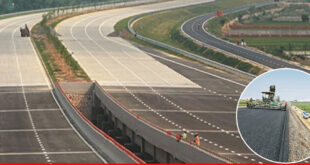International experts identified that through economic policymakers the foreign exchange reserves are viewed as ‘money in the bank’ – the more, the better. Reserves are a basic pillar of the macroeconomic toolkit. The experts showed that in countries that implement fixed or partially fixed foreign exchange rate systems, they are utilized as a mean to keep the exchange rate at or near the official target or parity level. Beyond exchange rate stabilization, foreign exchange reserves are believed a main indicator of the strength of an economy, chiefly of its exporting and importing industries. Regarding foreign trade, foreign exchange reserves are often an essential requirement to finance imports of goods and services. The foreign reserves reveal the financial strength of a country. Furthermore, foreign exchange reserves are chiefly important in international trade because they facilitate foreign transactions and raise the speed in which trade deals are finalized. Additionally, these reserves could contribute to the efficiency of international supply chains.
In Pakistan, according to the statistics released through the State Bank of Pakistan (SBP), the country’s foreign exchange reserves stood $12.75 billion at the end of February, their highest level in 27 months. The last time SBP had this many dollars was in November 2017. Since coming into power in August 2018, the Government of Pakistan had been facing a balance of payment crisis due to of depleting foreign exchange reserves. Statistics also showed that for every dollar earned, Pakistan was spending two, which led to a negative balance of payment. As a consequence, the government’s dollar reserves have been declining, making it hard for the government to maintain necessary imports like oil and machinery and repay its foreign loans. In January 2019, the SBP’s dollar reserves declined to $6.6 billion, the lowest level in the preceding 5-year and barely sufficient to sustain 2-month of import payments. If it didn’t enhance its dollar reserves, it would default on its foreign payments. However, Pakistan was able get greater than $10 billion from Saudi Arabia, Qatar, and China, counting an oil credit of $3 billion per year from the Saudis. However, that wasn’t enough so in July the government of Pakistan entered a deal with International Monetary Fund (IMF) to avoid a default. The $6 billion bailout program will cost Pakistan $180 million in interest payments to be paid in 3-year. However, the IMF program opened the doors to multilateral donors like the Asian Development Bank (ADB) and World Bank (WB) that also provided support to the country’s dollar reserves, counting financing the fiscal deficit. It is also important to note that IMF explains foreign exchange reserves as the external stock of assets that a country’s monetary authorities hold. They are composed of foreign banknotes, bank deposits in foreign currencies, and in foreign bonds, treasury bills, and other government securities. Regardless of the size of its economy, almost every single country holds significant amount of foreign exchange reserves, with greater than half of the world’s amount of foreign exchange reserves being held in the most traded global currency – the US dollar.
Pakistan’s statistics also showed that the inflow of dollars also assisted stabilise the exchange rate. The dollar has been trading at around Rs155 since August 2019, a stark contrast to the preceding year when it grew 25 percent. Former finance minister had used Pakistan’s dollars to control the exchange rate, so while it was lower a few years ago, the government of Pakistan was spending a lot of money to keep it that way. Another main contributor to the growing dollar reserves was the inflow of hot money in Pakistan’s short-term debt instruments. Foreigners have bought greater than $3 billion worth of the government’s treasury bills since July 2019. This is because they were getting a 13 percent return in rupee terms, which is much higher than what they would get from American and European markets even after adjusting for currency conversion loss. For now, Pakistan has been able to reduce its current account deficit by 76 percent. However, some experts warned of risks in the medium term as these short-term loans need to be paid back in one year along with a profit, which would reverse the flow of dollars and may bring the country back to where it was a year-and-a-half ago. To avoid a balance of payment crisis again, Pakistan needs to raise its exports.
| Liquid Foreign Exchange Reserves In Pakistan (Million US$) | |||||||
|---|---|---|---|---|---|---|---|
| End Period | Net Reserves With SBP | Net Reserves With Banks | Total Liquid FX Reserves | End Period | Net Reserves With SBP | Net Reserves With Banks | Total Liquid FX Reserves |
| 1999-00 | 997.0 | 976.6 | 1,973.6 | 2009-10 | 12,958.2 | 3,792.2 | 16,750.4 |
| 2000-01 | 1,688.9 | 1,542.6 | 3,231.5 | 2010-11 | 14,783.6 | 3,460.2 | 18,243.8 |
| 2001-02 | 4,337.4 | 2,098.2 | 6,435.6 | 2011-12 | 10,803.3 | 4,485.4 | 15,288.7 |
| 2002-03 | 9,529.1 | 1,240.6 | 10,769.7 | 2012-13 | 6,008.4 | 5,011.1 | 11,019.5 |
| 2003-04 | 10,563.9 | 1,825.4 | 12,389.3 | 2013-14 | 9,097.5 | 5,043.6 | 14,141.1 |
| 2004-05 | 9,804.7 | 2,792.9 | 12,597.6 | 2014-15 | 13,525.7 | 5,173.5 | 18,699.2 |
| 2005-06 | 10,765.2 | 2,357.2 | 13,122.4 | 2015-16 | 18,142.6 | 4,955.9 | 23,098.5 |
| 2006-07 | 13,345.4 | 2,301.8 | 15,647.2 | 2016-17 | 16,144.8 | 5,258.1 | 21,402.9 |
| 2007-08 | 8,577.0 | 2,821.7 | 11,398.7 | 2017-18R | 9,765.2 | 6,618.4 | 16,383.6 |
| 2008-09 | 9,117.9 | 3,307.3 | 12,425.2 | 2018-191/ | 7,280.4 | 7,196.4 | 14,476.8 |
| 1/: Provisional data subject to revision, R: Revised | |||||||
 PAGE Blog Business Weekly Magazine
PAGE Blog Business Weekly Magazine

